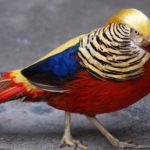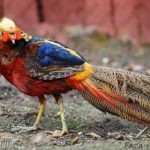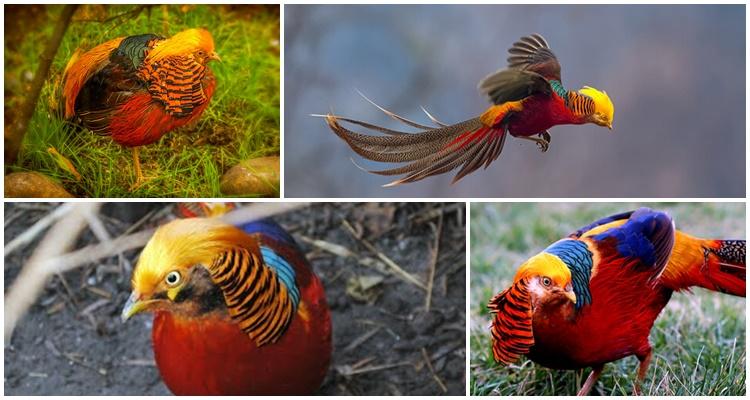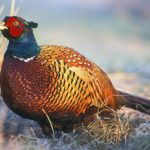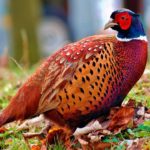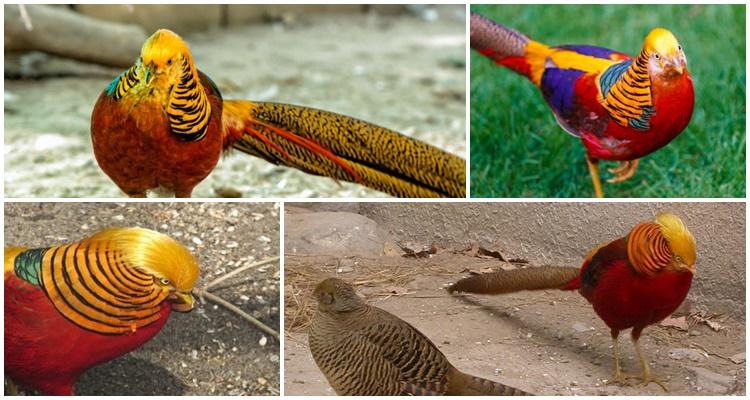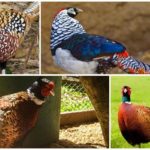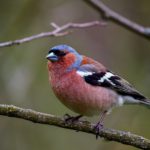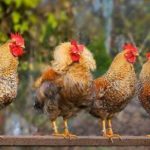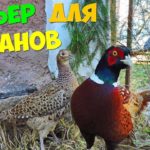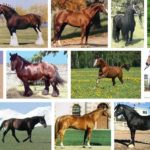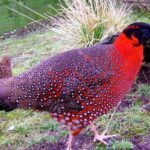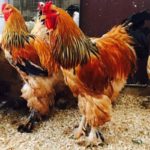Pheasant is a bird from the order Galliformes. Birds have been used for domestic breeding since the 13th century. The popularity of pheasants is facilitated by the fact that this bird has dietary meat. In their natural environment, adults are shy. However, after domestication, the bird demonstrates a friendly disposition and the ability to train. Pheasants do not require care and are frost-resistant.
General description of the bird
Representatives of the pheasant breed are distinguished by the following characteristics:
- body length - 90 centimeters or more (half is in the tail);
- pointed plumage on the tail and rounded plumage on the wings;
- there is no feathering around the eyes;
- the weight of an adult exceeds two kilograms;
- able to withstand cold;
- cannot tolerate heat and high humidity.
Pheasants come in a variety of plumage colors, from white to dark brown and black. In its natural environment, the bird settles in areas with tall grass and bushes.
Externally, the pheasant looks like a large chicken with bright plumage and pronounced folds on the face, which turn red during the mating season. Males become aggressive during nesting, often attacking other birds. Fights during this period often end in the death of birds.
How are females different from males?
Due to the fact that wild birds constantly have to avoid predators, the females of these birds are predominantly smaller than the males and have less colorful plumage. However, such sexual polymorphism is characteristic of the common pheasant. This sign is not always so pronounced in different breeds.
In some species, females are practically no different in appearance from males. Differences are manifested in details such as the presence and absence of a growth on the beak, less pronounced spurs, and others.
Types of pheasants
Researchers identify over 10 breeds and subspecies of pheasants. Most of these birds can be domesticated. Representatives of the diamond rock are distinguished by the following features:
- bright appearance (white feathers on the belly, green feathers on the back, and a red comb on the head);
- puberty occurs 6 months after birth;
- suitable for private breeding;
- the female can lay up to 30 eggs at a time.
The disadvantages of this type include:
- light weight (up to 1.1 kilograms);
- excessive care requirements.
In Russia, common pheasants are more often kept in households, since these birds are distinguished by the following characteristics:
- the weight of an adult is up to two kilograms;
- during the year the female lays up to 50 eggs;
- Sexual maturity occurs after 5 months.
When breeding this breed, the following disadvantages must be taken into account:
- aggressive behavior during the nesting period;
- each male needs one female;
- The poultry house must be protected from drafts.
Representatives of the hunting breed are in high demand among breeders. This species is characterized by varied plumage (from pure white to black) and the following features:
- in three months the female lays up to 60 eggs;
- the weight of an adult male reaches two kilograms;
- strong lower limbs;
- gain weight quickly with appropriate feeding;
- good health and high fertility, which is why the breed is used for selection.
Males hunting pheasants can live with 3-6 females at the same time. At the same time, representatives of this breed:
- aggressive towards relatives;
- actively consume food.
Households often contain eared pheasants, since this variety:
- has strong immunity to common diseases;
- reaches a mass of 2.1 kilograms;
- frost resistant;
- hardy.
However, this bird:
- does not tolerate moisture, as a result of which it is necessary to organize drainage in the poultry house;
- in captivity consumes compound feed.
Breeders distinguish 3 subspecies of eared pheasants, differing mainly in appearance. The white variety stands out from the rest in that the females do not incubate the eggs.
They also prefer to raise king pheasants for meat. This breed is distinguished by the following features:
- tender and tasty meat;
- frost resistance;
- strong immunity.
When breeding this bird, you need to consider the following:
- perches are needed in the poultry house;
- the weight of an adult male does not exceed 1.3 kilograms;
- the enclosures should be dry;
- The bird has a timid disposition.
Rarely bred in Russia green pheasants. Such birds are kept in Japan. But, despite this, this breed has the same characteristics as those described above.


